Artistic Legacy
The bursary in his name has proved a lasting gift from Mulmur artist Reed Cooper to local artists.
During his lifetime, artist Reed Cooper made an impressive contribution to the Headwaters arts scene. A founding member of Kame & Kettle Artists (kames and kettles are landforms left behind in these hills by receding glaciers), the artist showed his own accomplished works and those of other local artists at the Arielcroft Gallery in his Mulmur home. He taught printmaking; exhibited at the Museum of Dufferin and beyond, including the National Gallery; and he participated in studio tours, including the North of 89 Studio Tour held every fall.
And when Reed died in 2006 at the age of 75, he left a legacy that included not only an enduring body of work, but also a lasting gift of support for local artists, whom he befriended, taught, mentored, encouraged and advocated for.
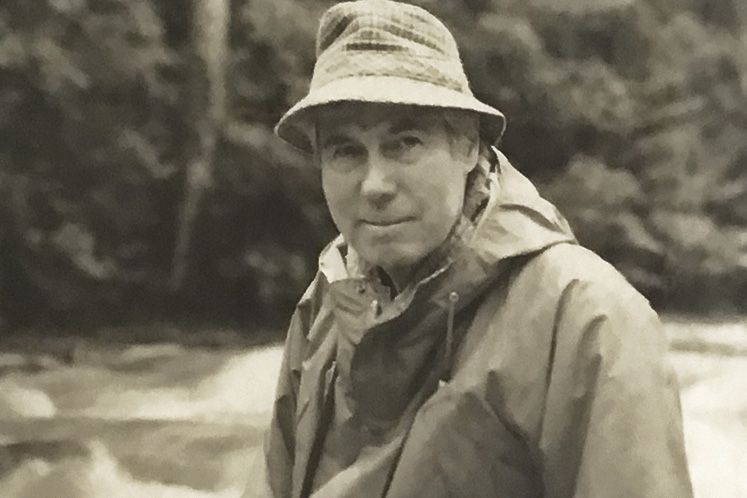
Portrait of Reed Cooper: “Reed & Pine” – Gerald Pisarzowski (1990)
Making art can be an unsettling and solitary pursuit, uncertain in appreciation, unrewarding financially and undermining of confidence.
Sometime a little means a lot. Reed was a quiet man. What he said mattered. Late in his life, he attended the opening of a solo show by an artist who was apprehensive about how her work would be received. Waiting until afterward, when the hubbub had died down, Reed quietly told her, “I like your work. You need to keep on doing what you’re doing.”
That artist was Christine Rogers. And in 2007, she became the first to receive a $3,000 Reed T. Cooper Bursary in Visual Arts, which was instituted by Reed’s widow, Jane, under the auspices of the Dufferin Arts Council.
Bermuda-born and McMaster University-educated, the lifelong artist started as a weekend painter who was able to devote himself fully to painting, and later printmaking, only after retiring early from his position as an economist with the Ontario government.
In the 1990s, Reed and Jane moved permanently to Mulmur, where they had maintained a weekend home since 1970. There, the two established and operated the Arielcroft Gallery. Reed looked after the artistic side while Jane tended the business end of things.
Reed’s abiding love was landscapes, in oil and watercolour, and later, serigraphs, or screen prints. He drew inspiration from the Mulmur landscapes around him, as well as the rugged country farther north in the Killarney area and regular visits to England.
Even when his later work ventured into the abstract, “he always jumped off from landscapes, inspiring and uplifting” in which he felt “the hand of God,” says Jane. “The last 20 years of his life were probably the happiest. He was doing what he loved and those around him were doing the same thing. It was a wonderful community of artists and neighbours.”
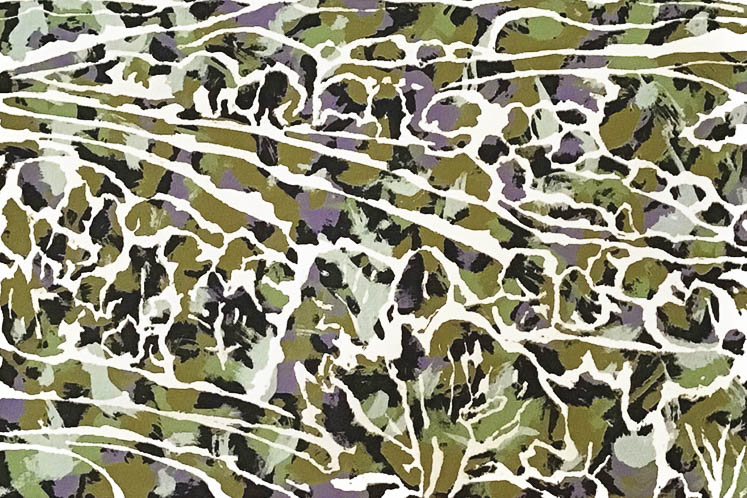
Artist Reed Cooper’s work was often inspired by the Mulmur landscape, as in “Hilltop View.”
For Jane, a highlight of the history of the bursary was the exhibition of a large body of work mounted at the Alton Mill Arts Centre by Linda Jenetti, the Coopers’ friend, near neighbour in Mulmur and 2012 bursary recipient. What Jane saw was a gratifying display of excellence – stunning oils portraying the landscape of Italy, where the bursary had helped send Linda to study, paint and grow.
Dufferin Arts Council now offers a Linda Jenetti Travel Award to honour Linda, who died in 2019.
A river meanders through Mulmur, pretty and slow. At a spot on its banks not far from the Cooper home, Reed painted one of his final watercolours, Pine River Winter, in the last year of his life.
“It is semi-abstract,” notes Jane, “but you could identify the spot.” The painting still hangs on her wall, along with others by her husband, and remains “something I could never part with.”
It is pleasing to think of the legacy of Reed Cooper – the artists and peers he befriended and inspired, and those he continues to encourage through the Reed T. Cooper Bursary – as a pebble in a secluded shallow of that same Pine River. A pebble that continues to send out ripples.
As an artist myself, I was grateful to receive a Reed T. Cooper Bursary in 2018. This meant that Darlene Hassall, the other 2018 recipient, and I sat on the 2019 judging panel, giving us a bird’s-eye view of the process.
The experience inspired me to check in with other bursary recipients, some of whom I had come to know, and ask them to comment on their own artistic journey and how the bursary influenced their work. Here’s some of what they had to say.
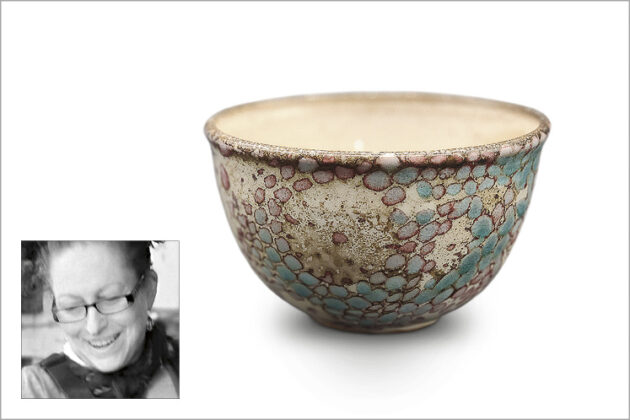
Pottery by Ann Randeraad
2019 – Ann Randeraad, Amaranth. Media: Clay
I knew Reed Cooper. He lived in a very quiet spot, making beautiful paintings. The beauty in the landscape and in the region is a fantastic inspiration for me and for many artists. The region is also very supportive of its artists, people drawn to the beauty of the area who also appreciate art. People looking for beauty in all areas of life.
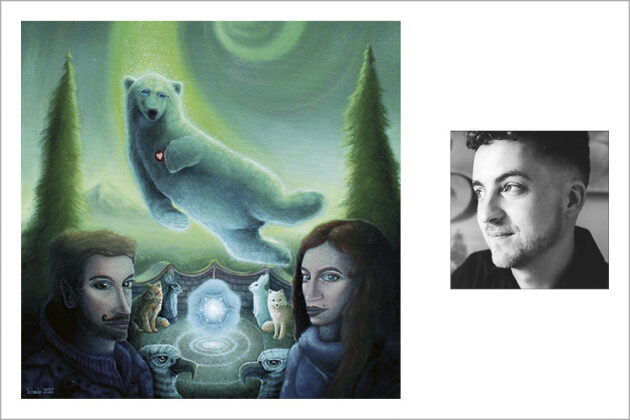
“All Me” by Ricky Schaede
2019 – Ricky Schaede, Orangeville. Media: Oil, Acrylic, Ink
I became an artist when I was living in a very small town – Alton. That might have affected the nature of my art. With nothing else to do, I dove into art. I’m glad I had that period. It made me appreciate the quiet of small-town life. In the city, I’d be socializing more, have to work more, have less time and mental space for art. Art is exploring the imagination. New things. New worlds.
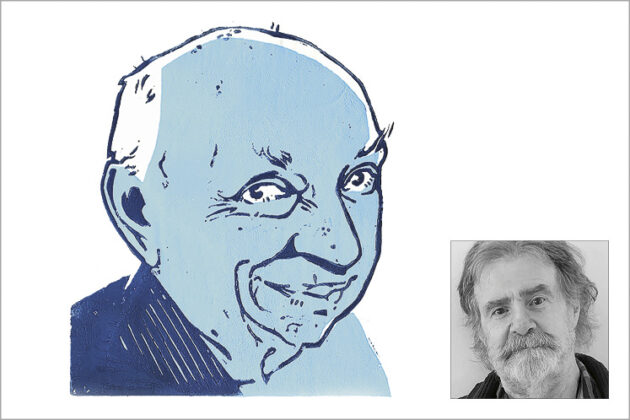
“Harvey Kolodny”, lithograph, by Anthony Jenkins
2018 – Anthony Jenkins, Mono (now Brockville). Media: Oil, Acrylic, Ink
The Reed Cooper Bursary pushed me to grow artistically. And when I participated on the panel awarding the bursary for the following year, I was able to tell Reed’s wife, Jane, and daughter, Sheila McCutcheon, that their family’s generous award had made another fundamental difference. I had come to know of Reed Cooper, to admire his work and spread word of it.
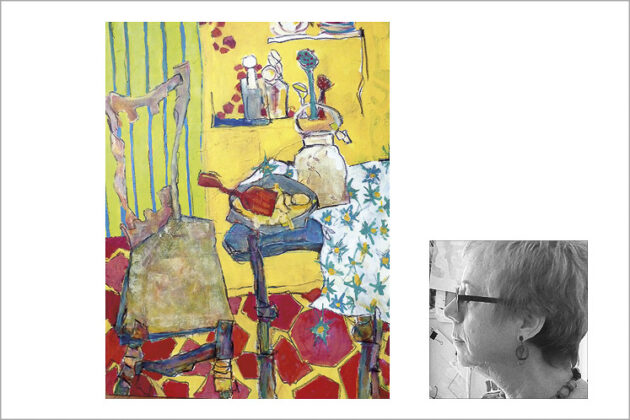
“eggs are gettin’ cold” by Darlene Hassall
2018 – Darlene Hassall, Shelburne. Media: Oil, Acrylic
Darlene died in 2022, but these words about her art appear on her website:
I see things differently, that’s what I want to show. I want to cause the viewer to pause and reflect. To consider that there may be another way to look at something.
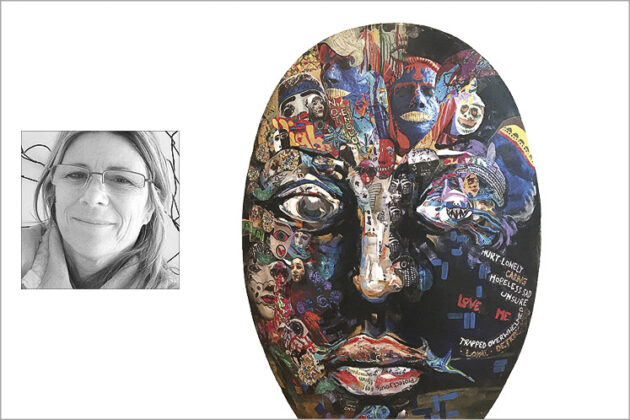
“Giant Mask”, a collaboration by Ann Clifford and students at the Pine River Institute
2017 – Ann Clifford, Mansfield (now Dunedin). Media: Sculpture
Lucky for us being in this area. Even the Dufferin Arts Council lunches… how moving and inspiring being with peers and people who are so interested, committed and supportive. The effort, the volunteerism, the sincere support of the arts and artists. It’s a gift! The bursary is an extension of that, the icing on the cake.
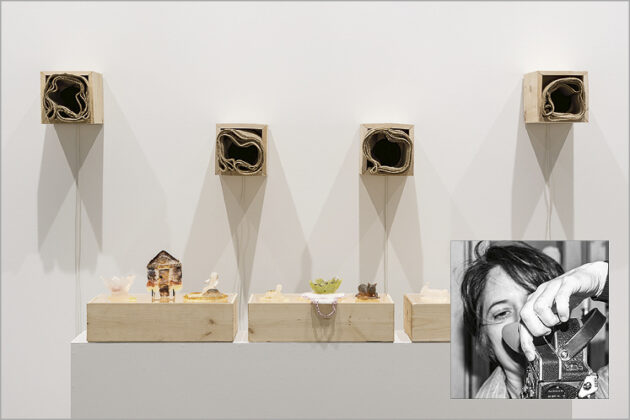
“The Dwelling Museum II”, a collaboration with members of the Syrian community. Photo by Kai Bakari.
2016 – Debbie Ebanks Schlums, Mulmur. Media: Glass, Installation Art
The Reed Cooper Bursary allowed me to explore how glass could tell a story of migrations – my own migration and, in their own words and creative expression, the migration of the Syrian community that first landed in the area.
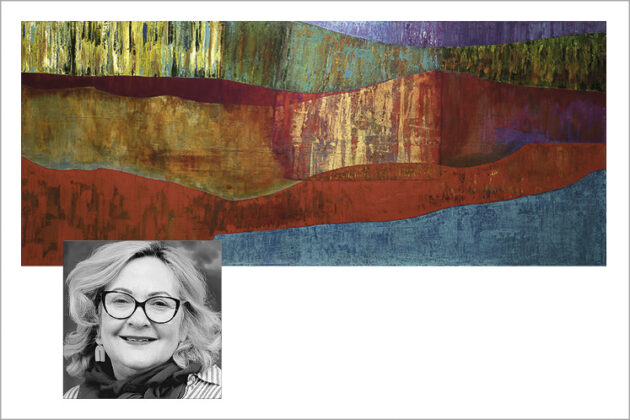
“Natural Wonder of the Earth”, detail, by Emilia Perri
2015 – Emilia Perri, Hockley Valley. Media: Acrylic
To develop and move forward as an artist, you have to listen to yourself, to what you have inside you since that’s where the art should be coming from. You can get lots of reactions to your art, but those reactions shouldn’t really affect what you are doing. That’s how you get to the next stage on the journey, not just by listening to what other people are saying about it, but by listening to where the art is coming from. That’s how you’ll know where to go from there.
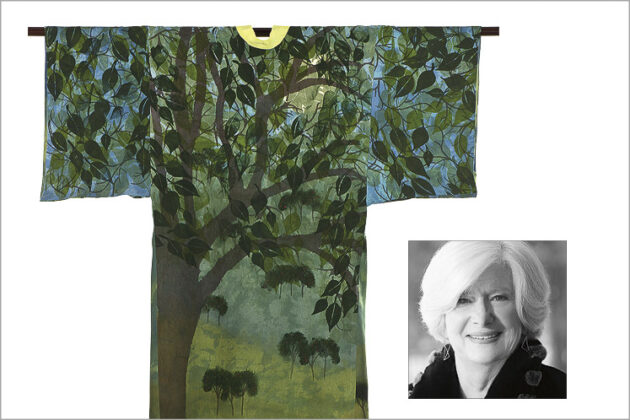
“Summer Solstice”, kimono, by Pat Burns-Wendland
2014 – Pat Burns-Wendland, Mulmur. Media: Textiles
The bursary gave me confidence in my work. It encouraged me to keep going, to push further with my work and to encourage other artists to do the same in their respective fields.
I’m not finished learning. I’m still taking courses in order to push the boundaries of my own work and to encourage the next generation to consider all that the arts have to offer.
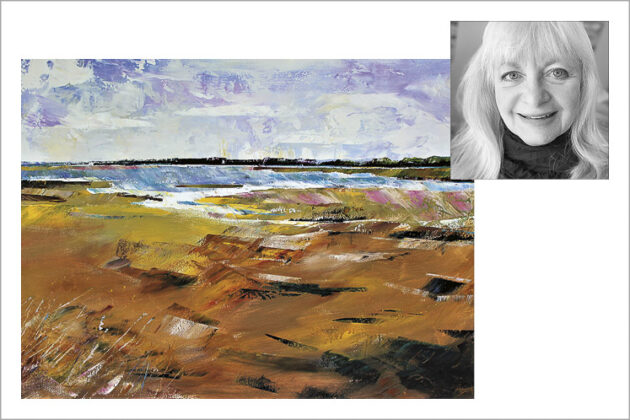
“Just Breathe” by Sharon Wadsworth Smith
2014 – Sharon Wadsworth Smith, Mulmur (now Bridgewater, N.S.). Media: Acrylic
Artists are considered to be our social conscience. They can be spokespeople for greater causes, sometimes working in response to environmental, political or social issues.
A community may not owe artists anything, but they are well equipped to help artists in mutually beneficial ways. The health of a community is reflected in the vibrancy of its arts.
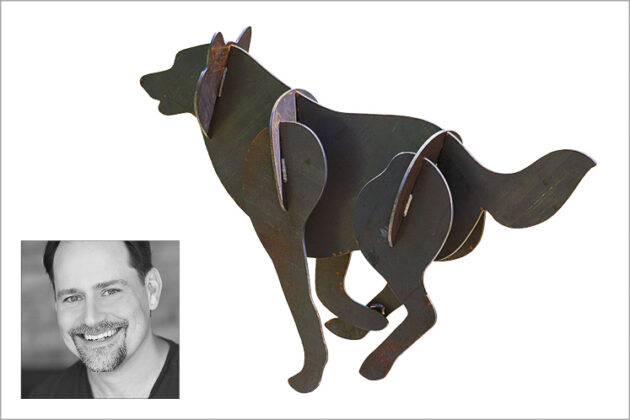
“The Hunt” by Ken Hall
2013 – Ken Hall, Mulmur (now Toronto). Media: Sculpture, Metal
There can sometimes be a competitiveness among artists. Artists who are protective of their work, their clientele, their success. “Look at my success, but don’t muscle in on it!”
When I moved to Headwaters, I found it completely different – full of people who wanted to see the arts thrive. They wanted to work together and share to achieve that. It was a positive, collaborative community from the get-go.
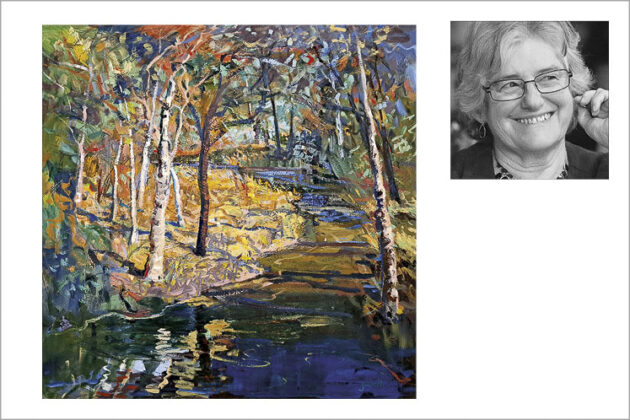
“River Impressions” by Linda Jenetti
2012 – Linda Jenetti, Mulmur. Media: Watercolour, Oil
Linda died in 2019. Her words are drawn from her website:
Cross-pollination also enlivens creativity, leading us to find meaning in other forms of art.
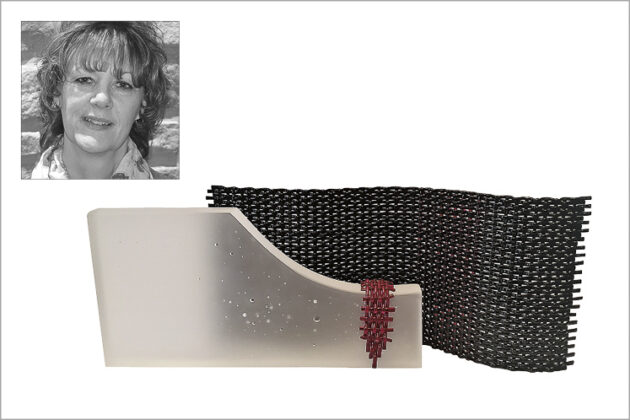
Glass art by Bridget Wilson
2011 – Bridget Wilson, Mono. Media: Glass
As a three-dimensional glass artist practising in what is considered a dying art form, it is important to educate people on the materials and techniques required to create unique works of art. The bursary enabled me to learn and to share processes in local schools. So, with hands-on opportunities, students are able not only to be creative but also to learn the relevance of the science. There is art in science and science in art.
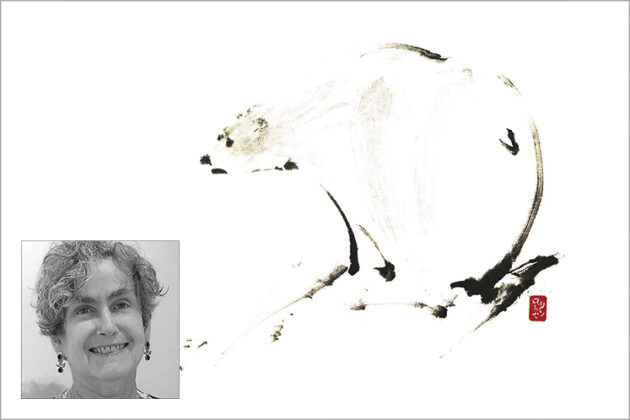
“Lookout” by Roslyn Levin
2010 – Roslyn Levin, Shelburne. Media: Sumi-e
I knew Reed and am both pleased and proud that his wife, Jane, has a few of my paintings in her collection alongside his work. Like Reed, I am both an artist and a teacher of art. He would be pleased that I won the bursary to write my book, The Brush Dances, and that I continue to share what I know, both personally and through my book, so that others can also follow an artistic path.
Everyone is creative. Their creative paths will vary, but all have something unique to share.
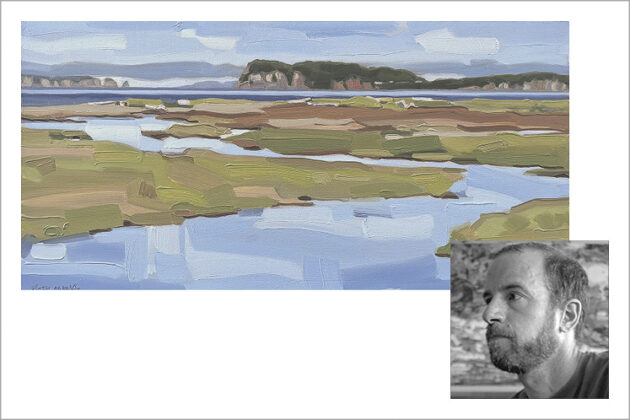
“Waterway to Cape Split” by Peter Adams
2008 – Peter Adams, Mulmur (now Collingwood). Media: Oil
Artists reflecting on their surroundings, on their life, trying to figure out ways of expressing their thoughts, feelings and observations in an artistic way, is of great benefit to society.
Likewise, people seeing, reading, listening to, pondering and discussing those artistic acts is equally beneficial to society.
How to apply for a Reed T. Cooper Bursary
The bursary is available to mid-career professional visual artists who live in Dufferin County and are members of the Dufferin Arts Council. Eligible media include painting, drawing, printmaking, sculpture, ceramics, fibre arts, glass, wood, photography and digital art.
“Mid-career” refers to artists who have been professionals for at least five years, excluding those at either end of an artistic career: novices, hobbyists and dabblers, and well-established artists.
Two bursaries can be awarded every year – or none, at the judges’ discretion. (No bursaries were awarded from 2020 to 2022, either because there were no applicants or they didn’t meet requirements.)
Bursary application forms (four copies) require a detailed written proposal for a project that will advance the artist’s talent, work or career. The project may include study or travel, mounting a themed show or exploring new ideas, techniques or media. Terms such as advancement, development and artistic growth loom large in application guidelines.
The bursaries are not awarded lightly and a well-thought-out application that clearly sets out the project’s goals is crucial. The application must include a detailed outline of projected expenses and revenues, as well as the artist’s resumé and photographs of current work.
Entries are judged on the basis of benefit to artistic growth, chances of success, measurable results and, importantly, benefit to others and to the community through an exhibition, publication, presentation, lecture or teaching of a course.
The judging panel looks for an artist who “displays unique talent and a potential for excellence.”
September 30 is the deadline for 2023 bursary applications.
Additional Dufferin Arts Council Awards
The Linda Jenetti Travel Award is a one-time $5,000 prize available to a Headwaters artist and current member of the DAC.
Three $2,500 scholarships from the Anne Laurier Scholarship Fund are awarded annually to Dufferin County Grade 12 students who display “exceptional talent” in visual, literary or performing arts, and who are preparing to study the arts at an accredited university or community college.
DAC’s Community Grants program offers quarterly grants to a maximum of $500 to help artists or arts groups initiate activities that enhance the arts in Dufferin County.
Related Stories
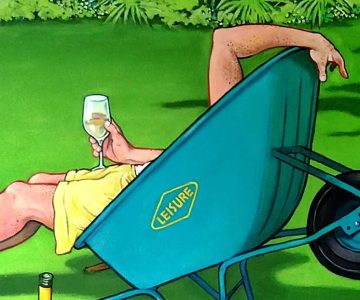
Anthony Jenkins
Jun 20, 2019 | | Artist in ResidenceAfter moving to Mono in 2012, Anthony began writing and illustrating for this magazine.
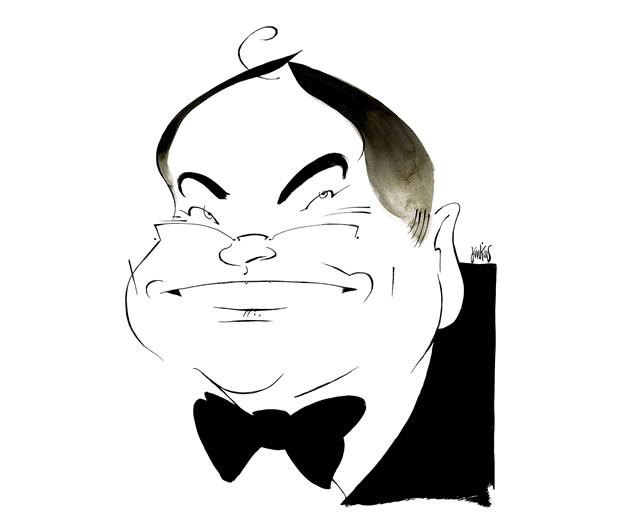
Anthony Jenkins – The Other Eye
Jun 20, 2016 | | Back IssuesAnthony Jenkins stages a retrospective of his caricatures of the famous and infamous – and finds a new fascination in the faces of the hills.








